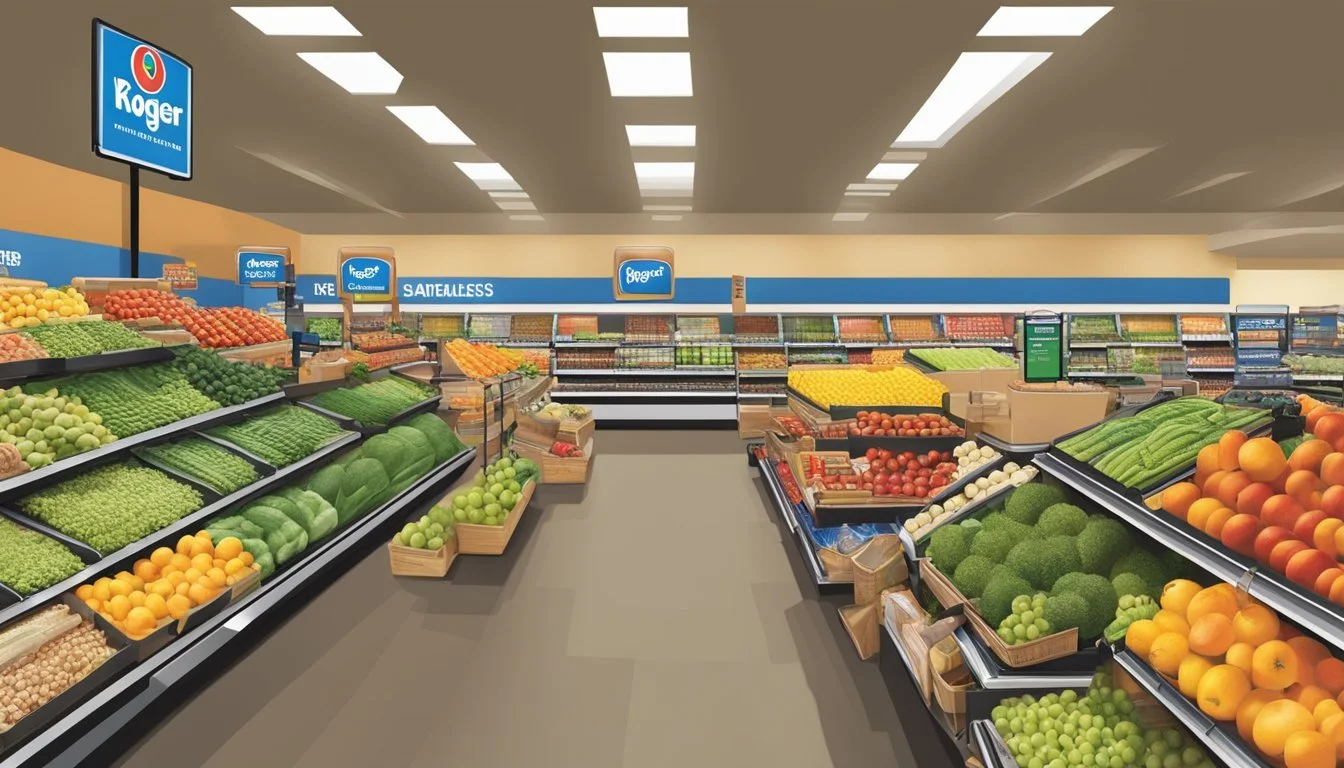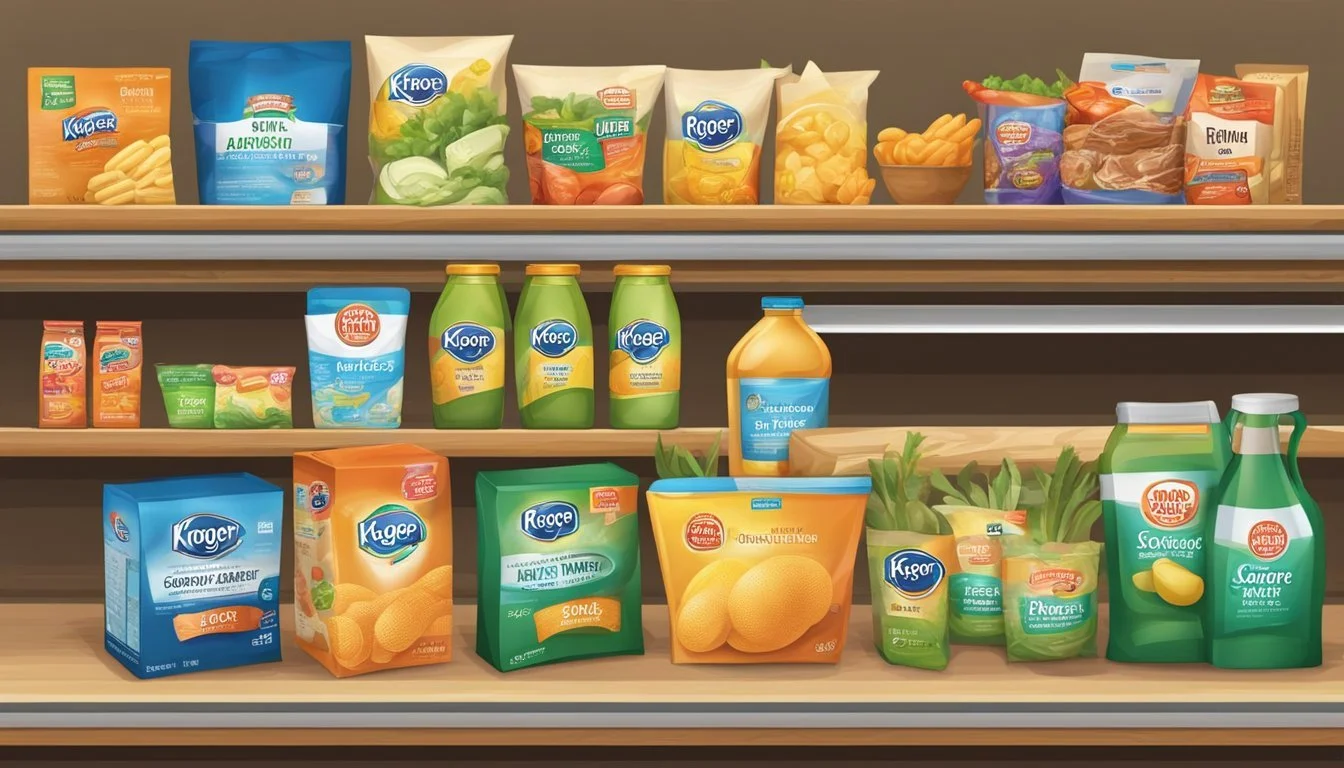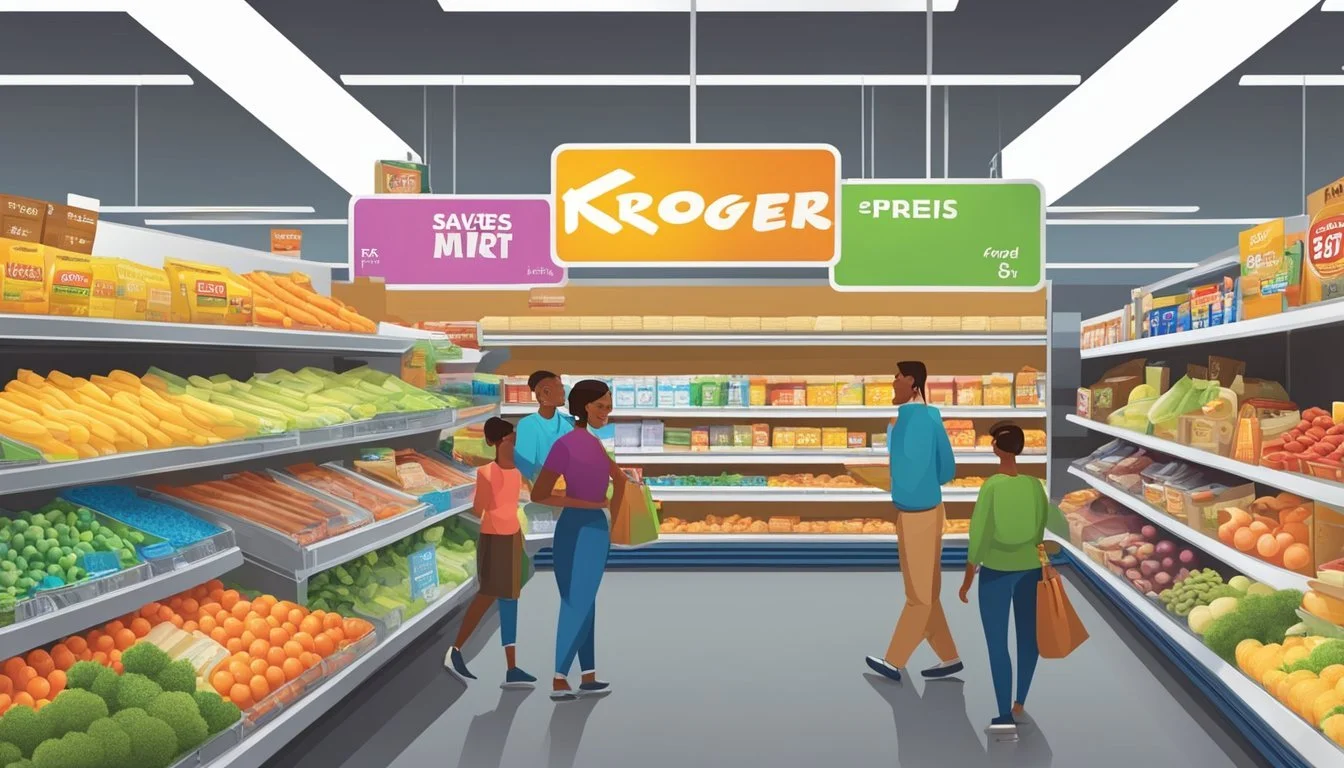Kroger vs Save Mart
Comparing Prices, Selection, and Customer Experience
Grocery shopping is a routine task for most households, and choosing the right store can significantly impact both your budget and overall experience. Kroger and Save Mart are two well-known grocery chains that cater to different regions and customer preferences.
Kroger, as one of the largest supermarket chains in the United States, offers a wide selection of products and competitive prices. Save Mart, primarily operating in California and Nevada, focuses on fresh produce and local offerings. While Kroger tends to have lower overall prices, Save Mart may offer better value on fresh items and regional specialties.
The choice between Kroger and Save Mart ultimately depends on individual needs, location, and shopping priorities. Factors such as price, product selection, store atmosphere, and customer service all play a role in determining which grocery store provides the better shopping experience for each customer.
Company Profiles
Kroger and Save Mart are two prominent players in the U.S. grocery retail industry. Both companies have unique histories, market positions, and operational approaches that shape their offerings to customers.
Kroger: An Overview
Kroger is one of America's largest grocery retailers. Founded in 1883 in Cincinnati, Ohio, the company now operates nearly 2,800 stores across 35 states. Kroger's store formats include supermarkets, multi-department stores, and price-impact warehouse stores.
The company generates annual revenue exceeding $130 billion. Kroger employs over 450,000 associates and serves millions of customers daily.
Kroger has embraced digital innovation, offering online ordering and delivery services. The retailer also operates its own manufacturing facilities, producing private label brands that compete with national brands on quality and price.
Save Mart: An Overview
Save Mart Supermarkets is a regional grocery chain primarily serving California and Nevada. Founded in 1952 in Modesto, California, the company has grown to operate over 200 stores under various banners including Save Mart, Lucky, and FoodMaxx.
The company remains privately held and family-owned. Save Mart employs around 14,000 team members and focuses on providing fresh, quality products with an emphasis on locally sourced items.
Save Mart stores typically range from 40,000 to 60,000 square feet. The retailer offers a mix of national brands, private label products, and specialty items catering to diverse customer preferences.
Location and Convenience
Kroger and Save Mart differ in their geographic reach and store accessibility. Both chains aim to provide convenient shopping experiences but have distinct footprints and operating schedules.
Store Proximity
Kroger boasts a larger national presence with over 2,700 stores across 35 states. The chain concentrates heavily in the Midwest and South. Save Mart operates primarily in California and Nevada, with about 200 locations. This regional focus allows Save Mart to tailor its offerings to local preferences.
Kroger's wider reach means more customers live near a store. In areas where both operate, Kroger typically has more locations per city. Save Mart compensates with strategic placement in neighborhoods and shopping centers.
Operating Hours
Kroger stores generally open earlier and close later than Save Mart locations. Many Kroger outlets operate 24/7, especially in urban areas. This schedule caters to night shift workers and early risers.
Save Mart stores usually open around 6 AM and close by 11 PM or midnight. Some locations adjust hours based on local demand. Both chains may have reduced hours on holidays.
Kroger's longer hours provide more flexibility for shoppers with varying schedules. Save Mart's consistent closing times can be easier for customers to remember.
Price and Value Comparison
Kroger and Save Mart employ different pricing strategies and offer various ways for customers to save money on groceries. Both chains aim to provide value, but their approaches differ in key areas.
Everyday Pricing
Kroger tends to have slightly higher base prices on many items compared to Save Mart. However, Kroger's larger selection often includes more premium and organic options, which can affect average prices. Save Mart focuses on keeping prices low across the board, especially on staple items and produce.
A typical grocery basket at Save Mart may cost 2-3% less than at Kroger before factoring in deals or loyalty program savings. Save Mart's "everyday low price" model aims to offer consistent value without relying as heavily on promotional pricing.
Discounts and Deals
Kroger runs frequent sales and promotions, often featuring "Buy 5, Save $5" deals on select items. Their weekly ad typically includes more discounted products than Save Mart's. Kroger's digital coupons are plentiful and easy to load to loyalty cards.
Save Mart offers fewer but often deeper discounts on featured items. Their "WOW!" deals provide significant savings on a rotating selection of products. Save Mart's digital coupon program is growing but still smaller than Kroger's extensive offerings.
Both chains price-match competitors' advertised deals on identical items.
Loyalty Programs
Kroger's loyalty program is more robust, offering personalized deals and fuel points that can be redeemed for gas discounts. Members earn 1 fuel point per dollar spent, with bonus point offers on certain items. Kroger's app makes it easy to track rewards and load digital coupons.
Save Mart's loyalty program is simpler but still valuable. It provides exclusive member pricing on select items each week. Save Mart's rewards are primarily focused on grocery savings rather than fuel discounts. Their digital coupon selection is more limited but still offers good savings opportunities.
Both programs are free to join and use phone numbers at checkout for easy access.
Product Range and Quality
Kroger and Save Mart offer diverse product selections to meet shoppers' needs. Both stores stock fresh produce, quality meats, popular brands, and store-label items. Their offerings cater to various dietary preferences and budgets.
Produce Selection
Kroger provides a wide array of fruits and vegetables, including seasonal and exotic options. Their produce section often features locally sourced items. Save Mart also offers a robust produce selection, with an emphasis on California-grown fruits and vegetables.
Kroger typically stocks over 100 organic produce items. Save Mart's organic selection may be smaller but still covers staple items.
Both stores implement quality control measures to ensure freshness. Kroger uses a color-coded system to indicate peak ripeness. Save Mart emphasizes quick turnover to maintain produce quality.
Meat Quality
Kroger's meat department offers USDA Choice and Prime grades. Their butchers can provide custom cuts upon request. Save Mart also stocks various meat options, including grass-fed and organic selections.
Kroger's meat often comes from their own processing plants, allowing for better quality control. Save Mart partners with local ranchers for some of their beef offerings.
Both stores frequently run promotions on popular meat cuts. Kroger's larger size may give them an edge in variety and consistent availability.
Store Brands vs National Brands
Kroger's main store brand is "Kroger," with premium lines like "Private Selection" and value options like "P$$T." Their organic line is "Simple Truth." Save Mart's primary store brand is "Save Mart," with "Sunny Select" as their value line.
Both stores stock major national brands alongside their private labels. Kroger typically offers more store brand options across categories. Save Mart's store brands focus on staple items and pantry basics.
Kroger's private label products often match or exceed the quality of national brands. Save Mart's store brands provide budget-friendly alternatives to popular items.
Organic and Special Diets
Kroger's "Simple Truth" line includes over 1,500 organic and natural products. They offer extensive gluten-free, vegan, and non-GMO options. Save Mart stocks organic items across departments but may have a more limited selection.
Kroger dedicates specific sections to special dietary needs, making shopping easier for customers with restrictions. Save Mart integrates these products throughout the store, with some dedicated shelf space for gluten-free items.
Both stores label products for common allergens and dietary preferences. Kroger's larger size often translates to more variety in specialty diet products. Save Mart focuses on carrying the most popular special diet items.
Shopping Experience
The shopping experience at Kroger and Save Mart differs in several key areas. Both chains prioritize customer satisfaction but implement distinct approaches to service, cleanliness, and checkout efficiency.
Customer Service Excellence
Kroger emphasizes personalized service through well-trained staff. Employees are knowledgeable about product locations and can offer recommendations. The chain provides dedicated customer service desks for returns and inquiries.
Save Mart focuses on a friendly, community-oriented approach. Staff members often build rapport with regular customers. The stores typically have fewer employees on the floor, but those present are helpful and approachable.
Both chains offer pharmacy services with knowledgeable pharmacists. Kroger's pharmacies tend to have shorter wait times due to more staffing.
Store Cleanliness
Kroger maintains high cleanliness standards across its stores. Aisles are regularly swept, and spills are promptly addressed. Produce sections are well-organized with fresh items rotated frequently.
Save Mart also prioritizes cleanliness but may have more variation between locations. Most stores are tidy, with clean floors and organized shelves. Some shoppers report occasional issues with expired products in certain departments.
Both chains have implemented enhanced cleaning protocols in recent years, with frequent sanitization of high-touch areas.
Checkout Efficiency
Kroger invests in technology to speed up checkout processes. Many locations offer self-checkout options and mobile scan-and-go services. The chain's loyalty program integrates with checkout systems for seamless application of discounts.
Save Mart typically has fewer checkout lanes but strives for efficiency. Some stores have introduced self-checkout kiosks to reduce wait times during peak hours.
Both chains experience longer lines during busy periods, but Kroger's larger stores often have more capacity to handle rushes.
Additional Services
Kroger and Save Mart offer various services beyond traditional grocery shopping to enhance customer convenience and satisfaction. These include pharmacy options, online shopping capabilities, and exclusive membership perks.
Pharmacy and Wellness
Kroger operates in-store pharmacies at many locations, providing prescription fulfillment and immunizations. Customers can manage their medications through online refills and reminders. Kroger also offers health screenings and wellness consultations.
Save Mart features pharmacies in select stores, though their presence is less widespread than Kroger's. They provide basic prescription services and some wellness products.
Both chains stock over-the-counter medications and health-related items in their regular aisles, making it easy for shoppers to address minor health needs during their grocery trips.
Online Shopping and Delivery
Kroger excels in e-commerce with its robust online platform. Customers can shop for groceries via the website or mobile app. The chain offers both pickup and delivery services, with same-day options available in many areas.
Save Mart has expanded its digital presence, introducing online shopping and delivery in partnership with Instacart. Their service coverage may be more limited compared to Kroger's extensive network.
Kroger's delivery fees range from $6.95 to $11.95, while Save Mart's fees vary based on order size and delivery time.
Membership Benefits
Kroger Plus is a free loyalty program offering personalized digital coupons, fuel points, and special promotions. Members earn points on purchases that can be redeemed for discounts on groceries or fuel.
Save Mart's rewards program provides digital coupons and personalized offers. It may offer fewer benefits compared to Kroger's more established system.
Kroger also offers a paid subscription service, Boost, which includes benefits like free delivery and double fuel points. Save Mart currently does not have a comparable paid membership option.
Consumer Feedback and Brand Perception
Kroger and Save Mart have distinct reputations among shoppers. Their customer service, product quality, and overall shopping experiences shape consumer perceptions and loyalty.
Consumer Reports Insights
Consumer Reports ranked Kroger higher than Save Mart in recent grocery store evaluations. Kroger received above-average scores for produce quality and store cleanliness. The chain's private-label products also earned praise for value and taste.
Save Mart scored well in the fresh foods category but lagged behind Kroger in overall satisfaction. Consumer Reports noted Save Mart's competitive pricing on staple items as a strength.
Customer Satisfaction Surveys
Independent surveys reveal mixed results for both chains. Kroger consistently ranks in the top quartile for customer satisfaction among national grocers. Shoppers appreciate Kroger's loyalty program and digital coupons.
Save Mart performs better in regional surveys, particularly in California markets. Customers value Save Mart's local produce selection and community involvement. However, Save Mart's customer service ratings trail behind larger competitors like Kroger.
Both chains have room for improvement in checkout speed and product availability, according to recent feedback.
Conclusion
Kroger and Save Mart both offer distinct advantages for shoppers seeking quality groceries and competitive prices. The choice between these two retailers ultimately depends on individual preferences and priorities.
Final Verdict: Kroger vs Save Mart
Kroger edges out Save Mart in several key areas. With its wider selection of products, Kroger provides more options for consumers. The retailer's private label brands offer good value without sacrificing quality. Kroger's loyalty program and digital coupons help shoppers save money on their grocery bills.
Save Mart shines in its focus on fresh, locally-sourced produce. The chain's smaller footprint allows for a more personalized shopping experience. Save Mart stores are often less crowded than Kroger locations.
Pricing between the two is comparable, with slight variations depending on specific items and promotions. Kroger tends to have more frequent sales and discounts.
For shoppers prioritizing variety and savings opportunities, Kroger is the better choice. Those who value fresh produce and a quicker shopping trip may prefer Save Mart.






